Guest blog by Nancy Hey, What Works Centre for Wellbeing
The places where we live, work and spend our time have an impact on our wellbeing. We know, for example, that there are spillover effects of crime, social fragmentation, and deprivation on our individual wellbeing regardless of whether these things affect us directly.
How can we measure community wellbeing?
The National Wellbeing Framework for the UK is the ONS dashboard, which reports how we are doing by producing accepted and trusted measures for the different areas of life that matter most to us.
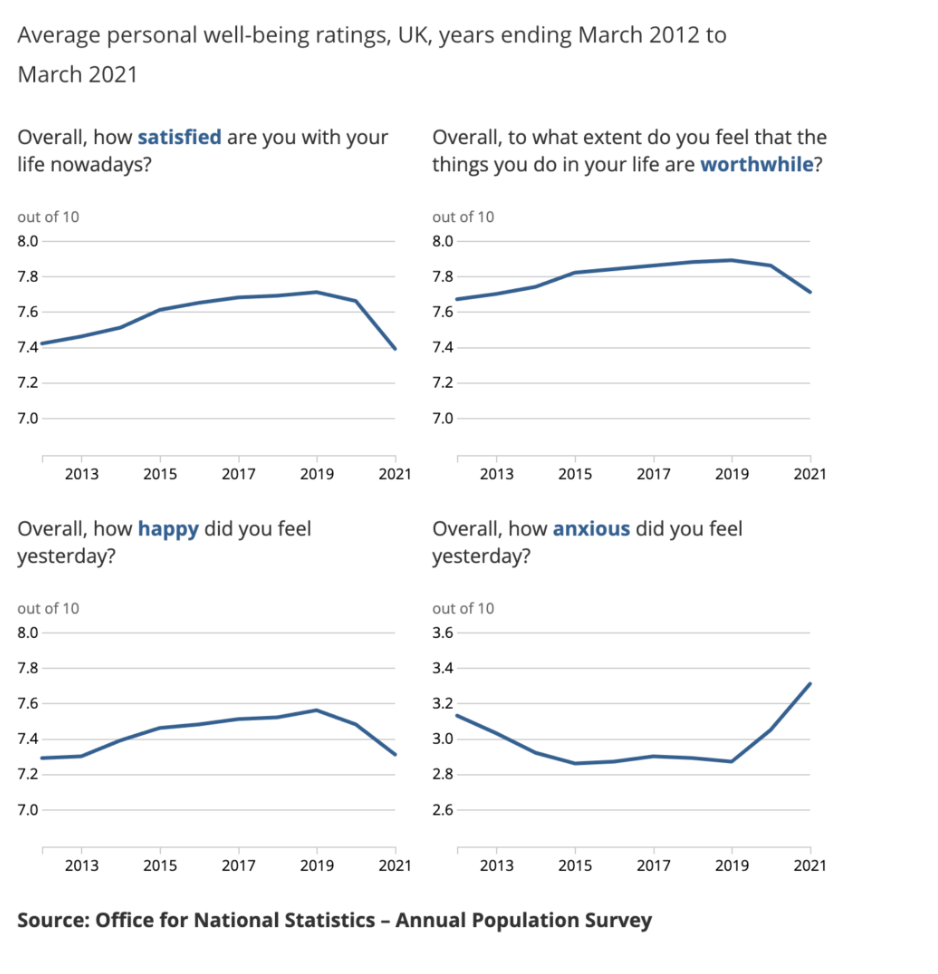
But measuring conditions at a local level is also important to understand how we’re doing in each community, how the drivers of wellbeing affect your area and how sustainable that is for the future.
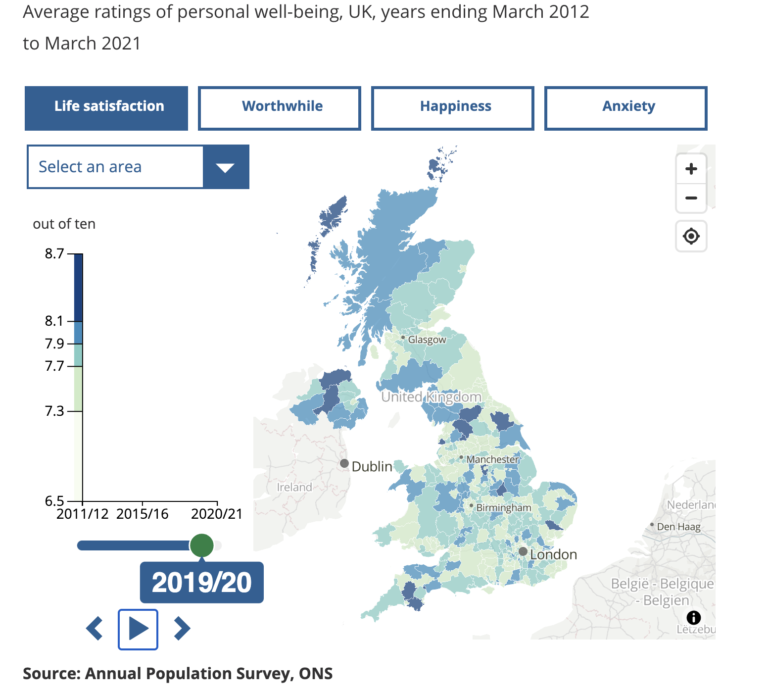
The Thriving Places Index was created by Centre for Thriving Places and is a great tool that identifies the local conditions for wellbeing and measures whether those conditions are being delivered fairly and sustainably. It incorporates the drivers of wellbeing data available at local authority level in England and Wales.
It’s designed to give a balanced and easy to read ‘dashboard’ of information on the different elements that support places to thrive. It cuts across different policy areas and is structured to provide a holistic way of approaching different priorities. It uses Local Authority level indicators for use by all sectors as a shared evidence base for action – to work out what might make the difference to your people in your place.
Examples of how the data can be used
This map shows variations in the local conditions that support wellbeing and illustrates why the coastal focus of the CMO for health is worth investigating:
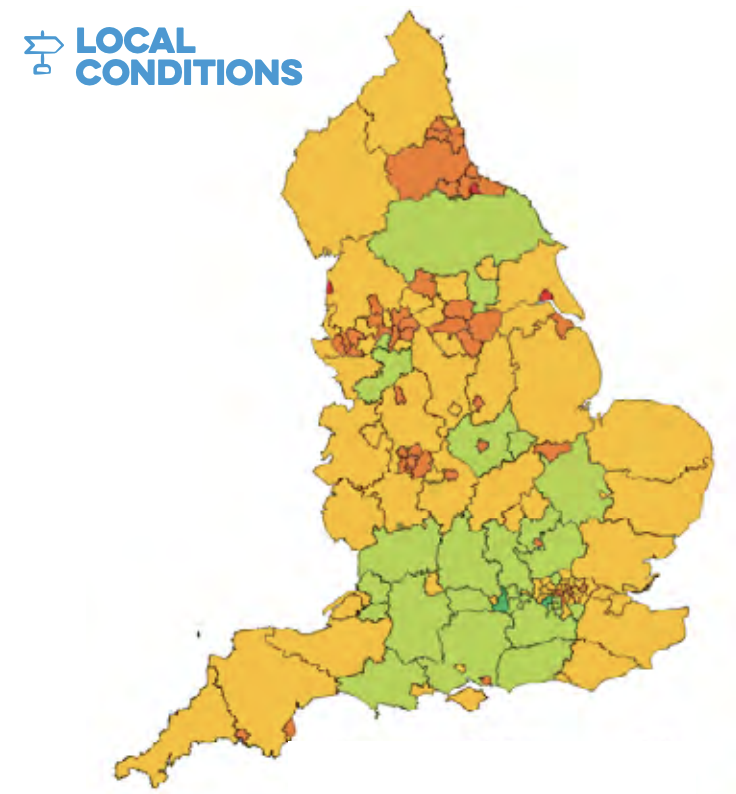
This map looks at the country by different aspects of fairness, and how different groups of people within places are doing:
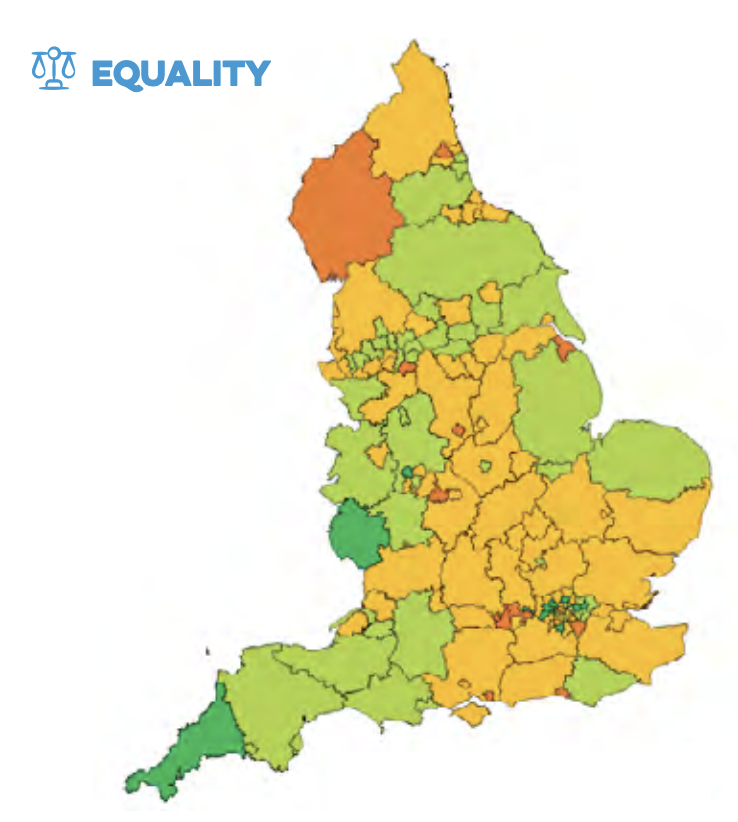
Although it is important to note that there will be hidden pockets of misery in some of the green places and vice versa. This map looks at sustainability – of energy use, waste and ‘green’ infrastructure:
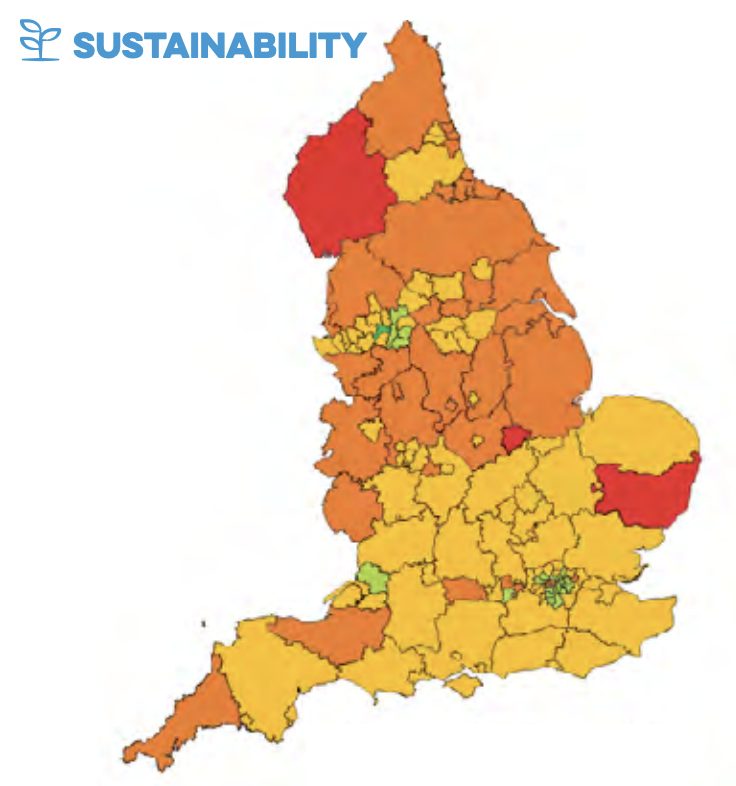
Although it is easy to focus on the red areas in this map, the data is also able to pull out where the lowest levels of homelessness are, who is the most active, where there is lots of green space to play in, which areas have great adult education etc.
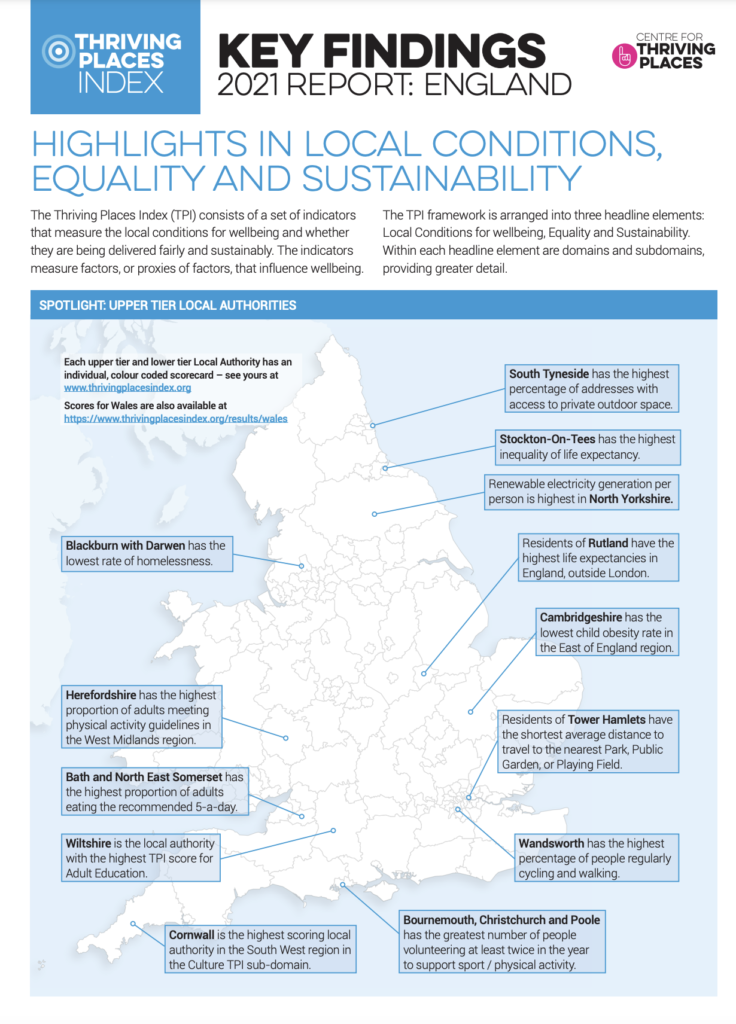
Living in communities that are thriving ultimately supports our individual and societal wellbeing. It means that the conditions are there for us to find good work, feel supported, live healthily, and meet everyone’s needs fairly, both now and in the future.
What makes a thriving place is complicated, but by looking at a much broader picture of what supports the wellbeing of communities, the Thriving Places Index shows what’s already going well and highlights that different areas experience different challenges. It is a great contribution to the evidence base, so that projects on the ground can work out what might make the difference to the wellbeing of their communities.
Nancy Hey, Executive Director, What Works Centre for Wellbeing
This blog was originally published on the What Works Centre for Wellbeing’s website on 18 November 2021.
Nancy Hey is a global leader in the field of wellbeing. Prior to setting up the Centre, she worked in the UK Civil Service as a policy professional and coach, delivering cross government policies including on constitutional reform. She has been instrumental in introducing wellbeing into public policy and establishing the professional policy community in the UK.
Main photo: Jonny Gios on Unsplash



Comments are closed.